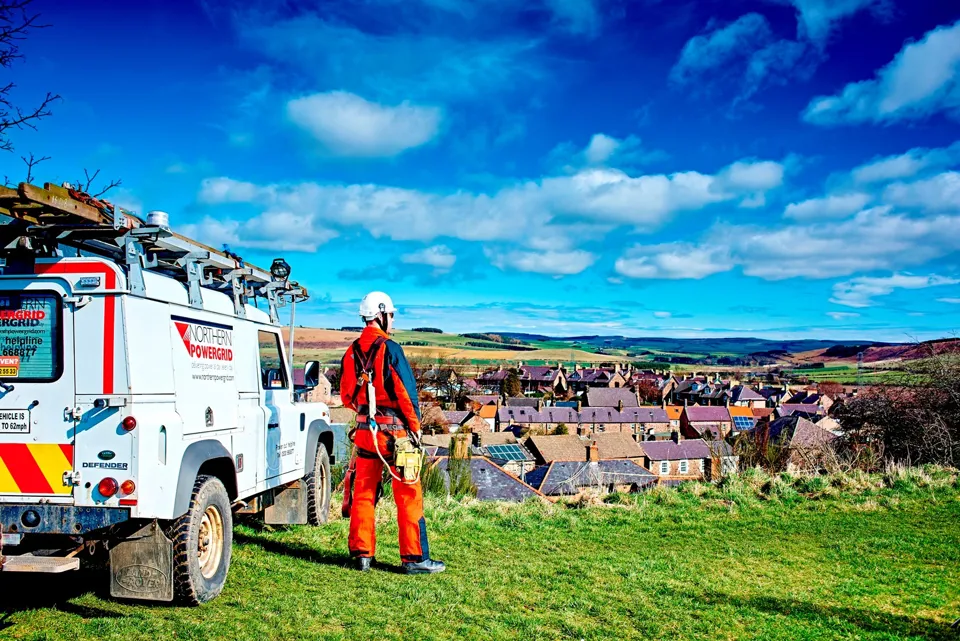Northern Powergrid is predicting that telematics data will deliver fuel savings of more than £140,000 a year after fitting the technology to almost half its fleet.
The technology has been installed into some 800 vehicles, which includes the majority of its vans and trucks as well as its pool car fleet.
However, with its company car fleet operated under an employee car ownership (ECO) scheme, the organisation told Fleet News it has “no plans” to fit them with telematics.
Installation of the technology has taken around seven months to complete and, in addition to predicted fuel savings, the electricity distribution company expects it to improve driver safety, reduce accidents and boost customer service.
All future commercial vehicles joining Northern Powergrid’s fleet will be fitted, as standard, with telematics, which can also help with vehicle accident investigations and prevent fraudulent third-party claims.
Northern Powergrid decided to equip its vehicles with telematics devices after monitoring how the fleet management tool helped subsidiary company Integrated Utility Services, a provider of power, water and gas infrastructure for the public and private sectors, further improve its operations.
Geoff Earl, head of safety, health and environment at Newcastle upon Tyne-based Northern Powergrid, said: “This investment will help us support our people, customers and business while delivering safety and environmental improvements every day.”
The “significant investment” by Northern Powergrid in the technology, supplied by Trackyou, includes: forward-facing cameras, a function to electronically record daily vehicle safety checks, a system that registers which driver is driving which vehicle and where and a panic button so the company can organise assistance in the event of an emergency.
The technology will also help support Northern Powergrid customers, as it can ensure the closest available engineer is deployed to any potential issues on its electricity network that may be causing a power cut for local people.
The company is responsible for a network that delivers electricity to 3.9 million homes and businesses in the north east, Yorkshire and northern Lincolnshire.
As part of the investment, all vehicles have also been fitted with a special in-cab ‘traffic light’.
The dashboard-mounted LED display runs from green through amber to red, depending on the driver’s actions.
With improved awareness, it can help drivers avoid harsh acceleration or braking and improve anticipation of changes in road or traffic conditions.
As a result, says Northern Powergrid, it encourages safer driving techniques which will help reduce potential accidents and, by increasing the amount of time a driver’s vehicle runs in the green, save fuel and reduce associated CO2 emissions.
Northern Powergrid says the fuel savings of more than £140,000 a year will be reinvested into the business.
Safety is a key corporate focus for Northern Powergrid and the company is a long-time Driving for Better Business champion.
The campaign is led by RoadSafe, which aids the Department for Transport’s ambition to support and promote good practice in safer fleet management and occupational road safety.
Earl said: “Having real-time information about our fleet means we can ensure it is used to maximum efficiency to support our customers and ensure we are able to be there for our employees if they need us.
“This is particularly important when our people have to work in remote locations, sometimes in challenging weather conditions.
“The in-cab traffic light display and extensive safety features the technology brings to our fleet will encourage safer, eco-friendlier driving and help us to achieve our goals to keep our people safe and reduce accidents, fuel use and our carbon footprint.”
The electricity distributor purchased the Trackyou devices and pays a monthly service charge for air time and access to the web-based service which supports the technology. It did not disclose specific costs in relation to its fitment.
The Trackyou system uses in-vehicle GPS satellite technology mated with intelligent mapping services.
The data is transmitted to provide fleet decision-makers with real-time information to keep track of where vehicles are and what they are doing at all times.

















Login to comment
Comments
No comments have been made yet.